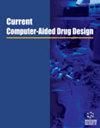通过网络药理学和分子对接确定黄花菜和黄芪可通过影响 AKTI 表达发挥抗结肠癌作用
IF 1.6
4区 医学
Q4 CHEMISTRY, MEDICINAL
引用次数: 0
摘要
背景:网络药理学是一种利用生物信息学预测各种疾病中多靶点药物和成分-靶点相互作用的新方法。对以前发表的研究进行彻底搜索后发现,白花蛇舌草(Hedyotis diffusa Willd,HDW)和黄芪(Astragalus membranaceus,AM)具有抗癌活性。结肠癌(CC)是消化道最常见的恶性肿瘤之一,好发于结肠。在此,我们探讨了两种药物治疗结肠癌的效果。研究目的本研究旨在预测和验证这两种药物治疗 CC 的效果。方法为了探索 "HDW-AM "药物治疗CC的分子机制,我们通过网络药理学、分子对接和实验验证,从成分、靶点和途径等方面分析了其主要功效。根据特定的筛选条件,通过 TCMSP 平台对药物成分及其基因靶点进行了检索和筛选。随后,选择与基因靶点相对应的成分构建药物成分-靶点网络。利用GEO(Gene Expression Omnibus)数据集收集和筛选CC和正常条件下的基因芯片,获得差异基因并构建火山图。筛选出药物靶点与疾病靶点之间的交叉基因,从STRING平台下载".tsv "文件并导入Cytoscape 3.8.0进行可视化,构建蛋白-蛋白相互作用(PPI)网络,确定核心靶点,并通过Autodock Tools-1.5.6对接与核心靶点的共同成分。通过 Metascape 平台进行了基因本体(GO)分析和京都基因组百科全书(KEGG)分析,以确定主要通路。CCK-8(细胞计数试剂盒-8)检测验证了槲皮素处理后 AKT1 对细胞增殖的影响。结果经过筛选,从 GSE75970 基因芯片中获得了 3658 个 DEGs(1841 个下调,1817 个上调);从药物中确定了 21 个活性成分和 220 个靶点。随后,筛选出 10 个核心基因(包括 AKT1、P53 和 CASP3)和 6 个主要成分。GO功能分析和KEGG分析表明,"HDWAM "通过转录调控因子复合物、膜筏、囊泡腔和蛋白激酶的结合,通过MAPK、PI3K-Akt和IL17信号通路调控细胞迁移和运动。分子对接结果表明,槲皮素能与 AKT1、TP53、TNF 和 CASP3 结合。HDW-AM可能通过调节AKT1、TP53、TNF和CASP3以及信号通路对CC产生治疗作用。CCK-8 细胞毒性试验证实,槲皮素通过 AKT1 影响细胞活力。结论:本研究通过网络药理学、分子对接和实验验证,为深入研究 "HDW-AM "药物治疗 CC 的分子机制提供了理论依据。本文章由计算机程序翻译,如有差异,请以英文原文为准。
Hedyotis diffusa Willd and Astragalus membranaceus May Exert Anti-colon Cancer Effects by Affecting AKTI Expression, as Determined by Network Pharmacology and Molecular Docking
Background: Network pharmacology is a novel approach that uses bioinformatics to predict multitarget drugs and ingredient-target interactions in various diseases. A thorough search of previously published studies revealed that Hedyotis diffusa Willd (HDW) and Astragalus membranaceus (AM) possess anticancer activity. Colon cancer (CC) is one of the most common malignant tumors of the digestive tract and occurs in the colon. Herein, we explored the effect of two drugs in the treatment of CC. Objective: The present study aimed to predict and verify the effect of these two drugs in the treatment of CC. Methods: To explore the molecular mechanisms of the “HDW-AM” drug in the treatment of CC, we analyzed its principal efficiency in terms of ingredients, target spots, and pathways via network pharmacology, molecular docking, and experimental verification. The ingredients and their gene target sites were searched and screened through the TCMSP platform according to specific filtering conditions. Subsequently, components corresponding to the gene targets were chosen to construct the drug component-target network. The GEO (Gene Expression Omnibus) dataset was used to collect and screen for gene chips under CC and normal conditions, obtain differential genes, and construct a volcano map. The intersection genes between drug and disease targets were screened, the “.tsv” file was downloaded from the STRING platform and imported into Cytoscape 3.8.0 for visualization, a protein-protein interaction (PPI) network was constructed, the core targets were identified, and the common components with core targets were docked through Autodock Tools-1.5.6. Gene Ontology (GO) analysis and Kyoto Encyclopedia of Genes and Genomes (KEGG) analysis were carried out through the Metascape platform to determine the major pathways. The CCK-8 (Cell Counting Kit-8) assay verified the effect of AKT1 on cell proliferation after treatment with quercetin. Results: After the screening, 3658 DEGs (1841 downregulated and 1817 upregulated) were obtained from the GSE75970 gene chip; 21 active components and 220 targets were identified from the drugs. Subsequently, ten core genes (including AKT1, P53, and CASP3) and six major components were screened. GO functional analysis and KEGG analysis revealed that “HDWAM” regulates cell migration and motility through the combination of a transcription regulator complex, membrane rafts, vesicle lumen, and protein kinases via the MAPK, PI3K-Akt, and IL17 signaling pathways. The molecular docking results suggested that quercetin binds to AKT1, TP53, TNF, and CASP3. HDW-AM may exert a therapeutic effect on CC by modulating AKT1, TP53, TNF, and CASP3 and through signaling pathways. A CCK-8 cytotoxicity assay verified that quercetin affects cell viability through AKT1. Conclusions: The current study provides a theoretical basis for an in-depth investigation into the molecular mechanism of the “HDW-AM” drug in CC treatment via network pharmacology, molecular docking, and experimental verification.
求助全文
通过发布文献求助,成功后即可免费获取论文全文。
去求助
来源期刊

Current computer-aided drug design
医学-计算机:跨学科应用
CiteScore
3.70
自引率
5.90%
发文量
46
审稿时长
>12 weeks
期刊介绍:
Aims & Scope
Current Computer-Aided Drug Design aims to publish all the latest developments in drug design based on computational techniques. The field of computer-aided drug design has had extensive impact in the area of drug design.
Current Computer-Aided Drug Design is an essential journal for all medicinal chemists who wish to be kept informed and up-to-date with all the latest and important developments in computer-aided methodologies and their applications in drug discovery. Each issue contains a series of timely, in-depth reviews, original research articles and letter articles written by leaders in the field, covering a range of computational techniques for drug design, screening, ADME studies, theoretical chemistry; computational chemistry; computer and molecular graphics; molecular modeling; protein engineering; drug design; expert systems; general structure-property relationships; molecular dynamics; chemical database development and usage etc., providing excellent rationales for drug development.
 求助内容:
求助内容: 应助结果提醒方式:
应助结果提醒方式:


